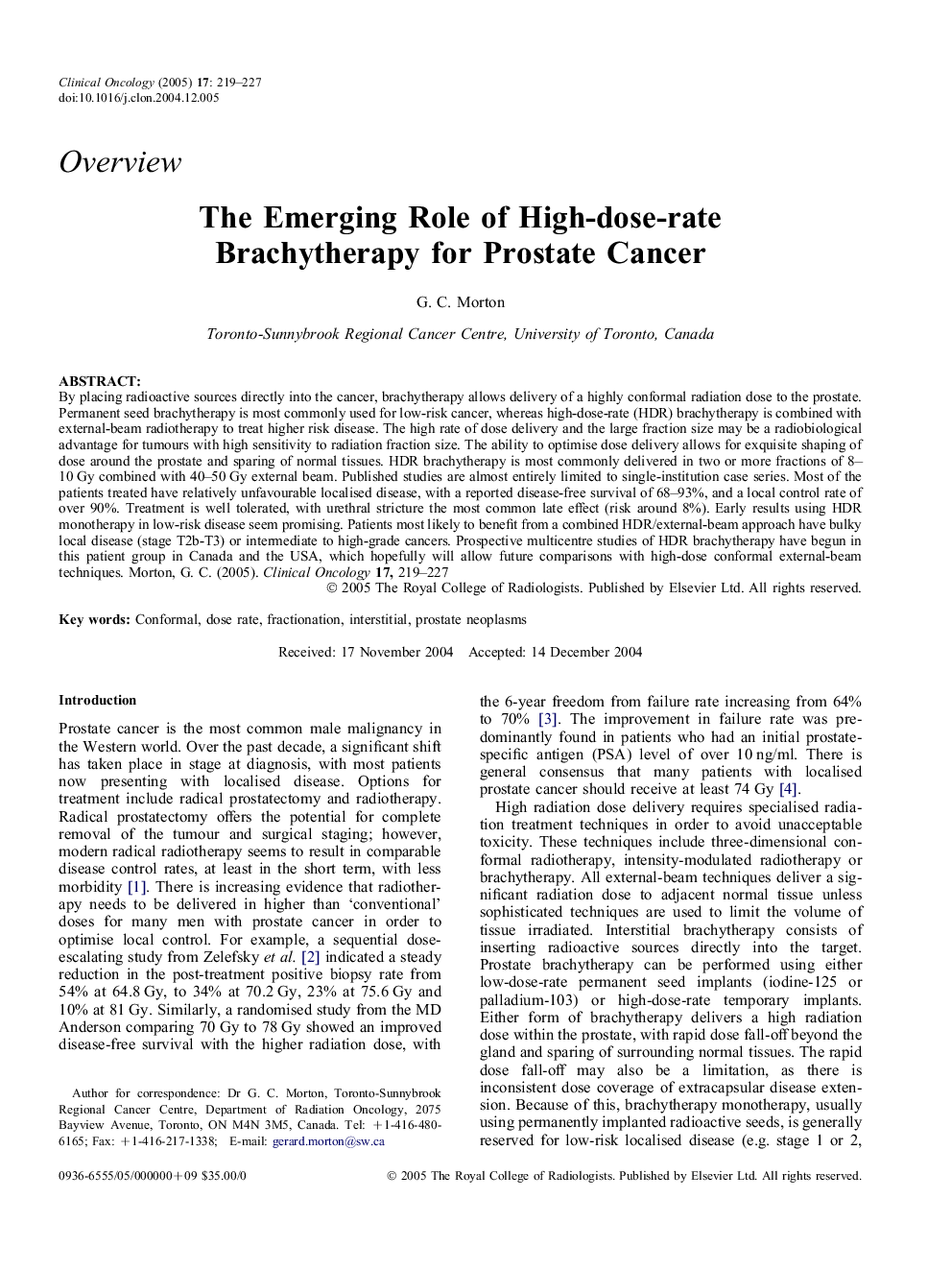| Article ID | Journal | Published Year | Pages | File Type |
|---|---|---|---|---|
| 9600998 | Clinical Oncology | 2005 | 9 Pages |
Abstract
By placing radioactive sources directly into the cancer, brachytherapy allows delivery of a highly conformal radiation dose to the prostate. Permanent seed brachytherapy is most commonly used for low-risk cancer, whereas high-dose-rate (HDR) brachytherapy is combined with external-beam radiotherapy to treat higher risk disease. The high rate of dose delivery and the large fraction size may be a radiobiological advantage for tumours with high sensitivity to radiation fraction size. The ability to optimise dose delivery allows for exquisite shaping of dose around the prostate and sparing of normal tissues. HDR brachytherapy is most commonly delivered in two or more fractions of 8-10Â Gy combined with 40-50Â Gy external beam. Published studies are almost entirely limited to single-institution case series. Most of the patients treated have relatively unfavourable localised disease, with a reported disease-free survival of 68-93%, and a local control rate of over 90%. Treatment is well tolerated, with urethral stricture the most common late effect (risk around 8%). Early results using HDR monotherapy in low-risk disease seem promising. Patients most likely to benefit from a combined HDR/external-beam approach have bulky local disease (stage T2b-T3) or intermediate to high-grade cancers. Prospective multicentre studies of HDR brachytherapy have begun in this patient group in Canada and the USA, which hopefully will allow future comparisons with high-dose conformal external-beam techniques.
Related Topics
Health Sciences
Medicine and Dentistry
Oncology
Authors
G.C. Morton,
